This is what ‘90s culture was really about
By the turn of the millennium, gigs will be obsolete, as will CDs, and we’ll all be getting our kicks from interactive computer concepts and feng shui classes. Iain Shedden disagreed. But how right was he?
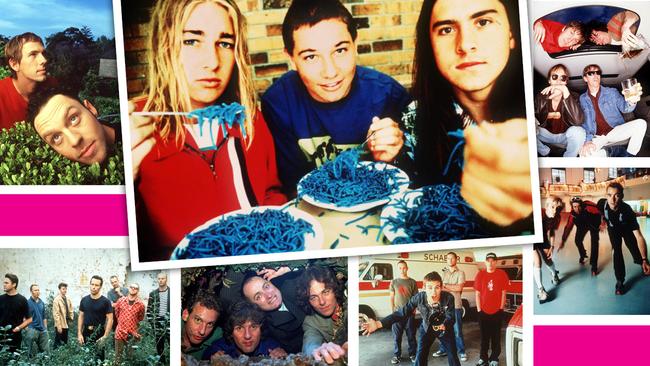
For The Australian’s 60th birthday on July 15, we are celebrating decades of quality journalism. Today we look back at the culture & lifestyle coverage in the 1990s.
DISC DILEMMA AND A NEW WAVE
- By Ian Shedden, music writer. First published March 14, 1998
Rock’n’roll is dead. Again.
This time for good. By the turn of the millennium, gigs will be obsolete, as will CDs, and we’ll all be getting our kicks from interactive computer concepts and feng shui classes.
The media have spent much of the 1990s deliberating on this bogus notion.
Indeed, the idea of rock and pop music being overrun by the march of technology has been bandied around for as long as the genre has existed. They said talking pictures wouldn’t last either.
The truth is that modern technology can only be good for rock music, even if it does alter the infrastructure of the industry.
The means of recording and manufacturing your own CD is within most people’s grasp already and, with the advancement of the internet, legalities aside, indications are that more music will be available to more people than ever before. This might be a gloomy prospect for the major corporations but, to the rest of us, it’s a clear indication that, far from being dead, rock’n’roll is here to stay. The debate continues on whether the deregulation of CD imports will go ahead and whether that would have an adverse effect on the local market, but no matter what the outcome, bands will still emerge and albums will be made.
The ’90s, despite a few rough patches, has been a successful decade for the Australian industry. While the live circuit fluctuates at grassroots level, there is still a host of acts who have come through, looking to open the door to international recognition. The question is – can they do it?
The most glaringly positive answer is in the phenomenal success of Brisbane duo Savage Garden.
In fewer than two years, Daniel Jones and Darren Hayes have gone from nothing to global stardom, capped just two months ago when they scored their first US No.1 with the ARIA Song of 1997, Truly, Madly, Deeply.
While our musical exports at the dance/pop end of the spectrum are plentiful, with some appearing capable of sustaining lengthy careers, there have been few rock acts who have established international credentials in recent years and none that look likely to replicate the achievements of INXS, AC/DC or Crowded House.
The notable exceptions are silverchair. The young Newcastle trio of Daniel Johns, Ben Gillies and Chris Joannou have managed to do what many British bands (and the odd Aussie one) first achieved in the ‘60s – to sell American music back to the Americans. With youth on their side, silverchair could well be our most significant rock export by the turn of the century.
Our biggest and best rock star of any generation was, of course, Michael Hutchence. INXS in the ‘90s may not have been the force they were in the previous decade, but Hutchence was a star, sometimes against his will, until the end. His death is impossible to categorise; his suicide difficult to understand. His musical legacy is a batch of excellent records and to millions of fans the memory of a truly great rock’n’roll performer.
INXS will now most likely go the way of some of their ‘80s contemporaries, bands such as Hunters and Collectors and Hoodoo Gurus, who in the past few months have opted to quit while still at a (just) credible stage in their careers.
It’s at the manufactured end of the music business where Australian acts continue to be the most successful. The Kylies and the Tinas and the Peter Andres just keep on coming. More to the point, they don’t appear to be burning out. Kylie Minogue’s continued reinvention is a masterstroke of cosmetic surgery on a slender talent that refuses to budge from the charts.
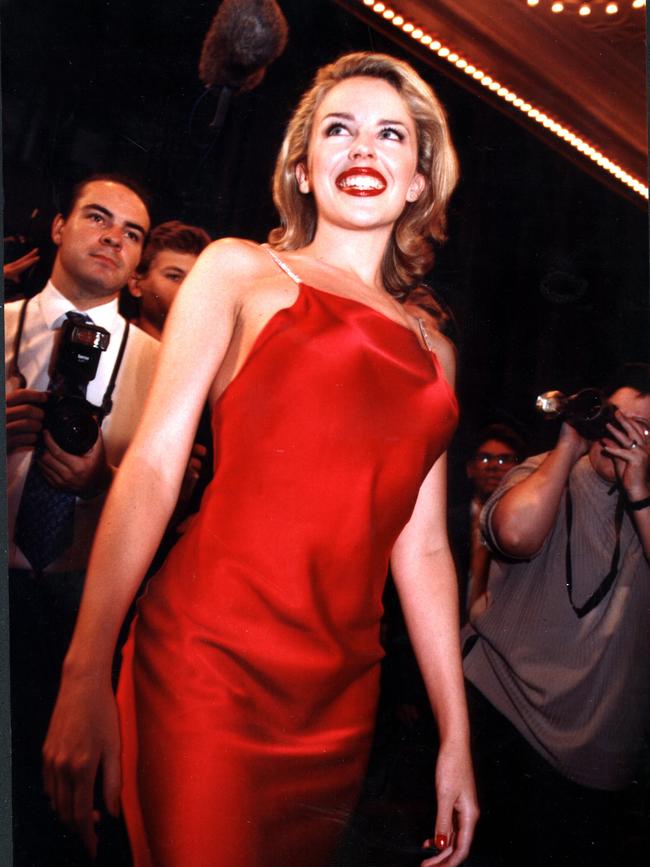
Australia is the ninth-largest music consumer in the world, with a wholesale annual sales figure of more than $560m. The local industry is worth an estimated $220m in annual exports and is consolidating in overseas markets.
Though there is optimism in the air now, in 1995 the Australian industry appeared to be in turmoil. The apparent threat over CD prices and the unknown quantity of cyberspace were causing sleepless nights for company moguls and a summit was arranged in Canberra to discuss a strategy that would turn the tide.
While some saw it as a crisis, others viewed the apparent slump as merely a changing of the guard; a drift away from the likes of Jimmy Barnes, Midnight Oil and INXS to relatively new acts such as The Cruel Sea, You Am I and silverchair.
Despite the problems of fewer venues for bands and the limited outlet for their music on commercial radio, the recent Homebake festival tour was confirmation that there is plenty of homegrown talent in Australia – Spiderbait, The Superjesus, Custard, Grinspoon; the list goes on. Aussie rock’n’roll is 40, and the story’s just begun.
ALL ABOARD THE BUS OF FUN
- By Evan Williams, in Cannes. First published May 17, 1994
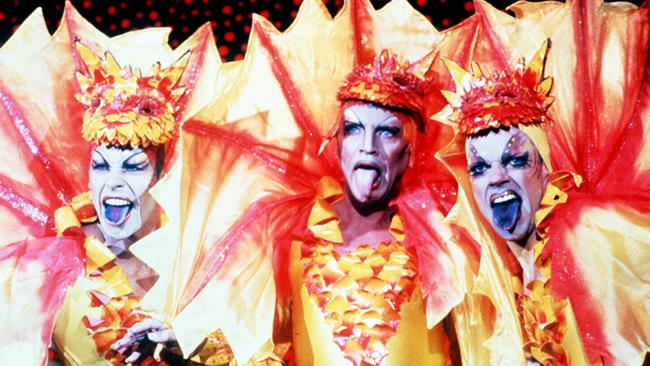
Stephan Elliott’s new Australian musical and drag comedy, The Adventures of Priscilla, Queen of the Desert, continued its run of success in Cannes last night with a market screening for almost 1000 exhibitors and critics in Cannes Olympia Cinema.
The film screened to another ovation – significantly, this time, from an audience of supposedly hard-headed trade buyers and business people.
It was by no means the same carefully primed and sympathetic crowd laced with Australian officials and film enthusiasts who attended the record-breaking midnight premiere yesterday morning at the Palais de Festivals, from which 2500 people were turned away.
Officials of Polygram International, the film’s major investors along with the Australian Film Finance Corporation, are delighted with Priscilla’s sweep. Each year in Cannes a particular film mysteriously acquires le buzz.
Last year it was The Piano, the year before it was Strictly Ballroom. This year it is Priscilla, though high hopes are held for another Australian entry, Muriel’s Wedding.
Priscilla is the story of two Sydney drag queens and a transsexual (played by Terence Stamp, Hugo Weaving and Guy Pearce), who head for the central desert in a ramshackle bus to perform in an outback resort. For much of the film they mime to familiar songs.
Introducing Priscilla at last night’s screening, Stephan Elliott called it a “revival of the musical”. In fact, it represents a comic breakthrough equivalent to that of Les Cages aux Folles 16 years ago. For better or worse it defines new standards of acceptability and decency on the screen.
The film’s outrageous energy and lewdness will appeal to many, but will just as likely antagonise others. For this reason, cautious Australian officials and industry representatives were voicing some doubt whether Priscilla would prove the runaway box office hit that everyone hopes for. The market will soon decide.
Tragic end to a brilliant life
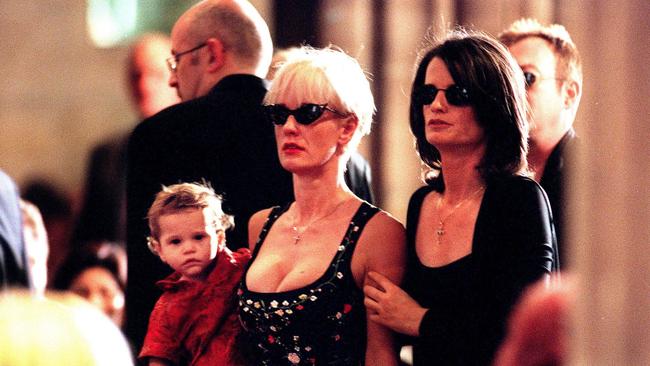
A grieving Paula Yates walked into St Andrew’s Anglican Cathedral, Sydney, yesterday with 16-month-old Heavenly Hiraani Tiger Lily on her hip. Mother and baby had flown halfway around the world to farewell Michael Hutchence, Yates’s lover and Tiger’s father and the mainstay of their lives.
More than 800 people crammed into the cathedral to mourn Hutchence, 37, a friend, son, brother, lover to some; but to most a distant figure on a glittering stage of the international rock world.
The coffin was covered in a dense mass of purple irises, and a single yellow tiger-lily, a symbol of his only child. The service began with the INXS song By My Side.
Friends and family at the service included Kylie Minogue in a black veil, with a black silk rose in her hair; Helena Christensen, Peter Garrett, Tom Jones, Jimmy Barnes, Kate Ceberano and Wendy Matthews.
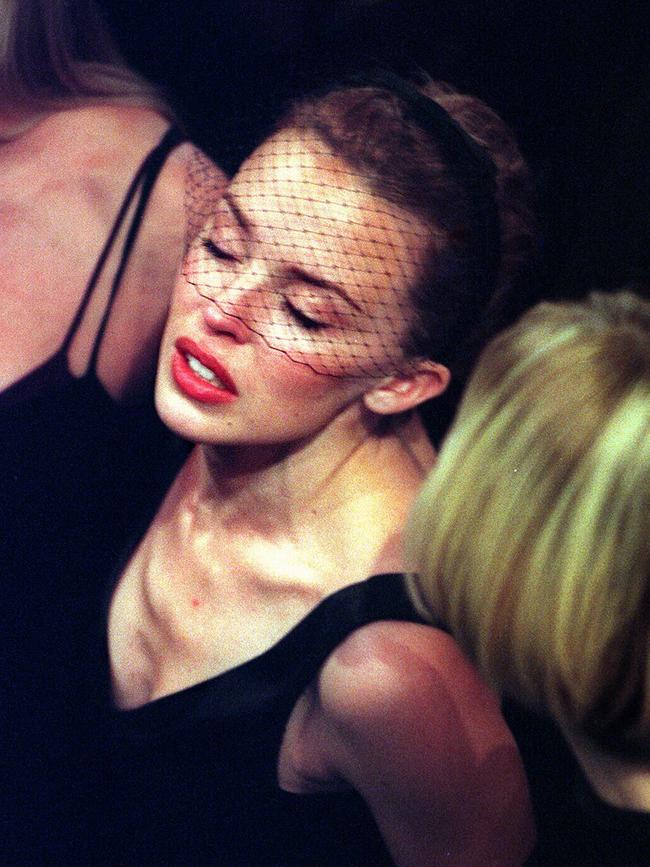
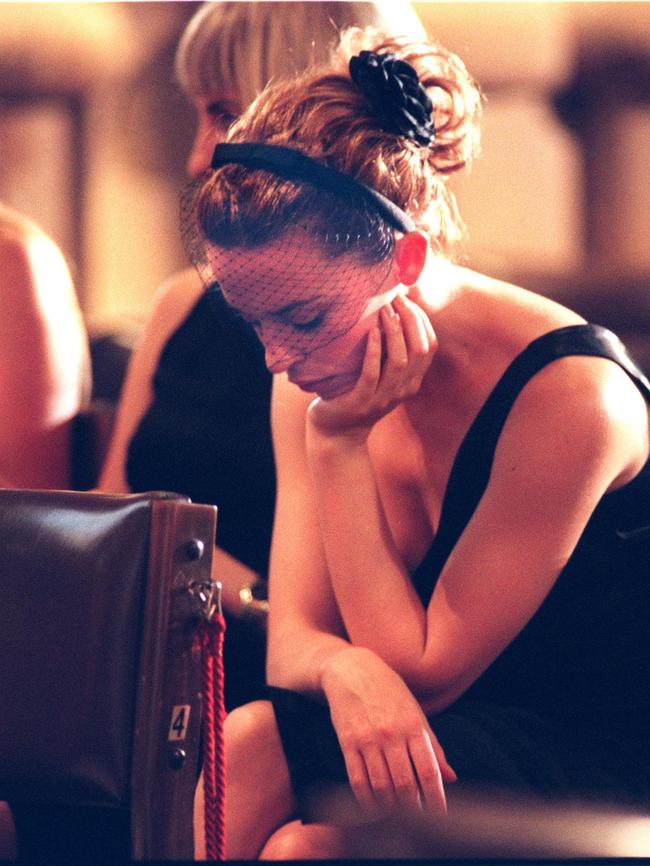
The actress Kym Wilson, who was with Hutchence the night before he was found hanged, arrived late, holding the hand of a young woman friend. They crouched on the floor while an usher found them seats in the public pews.
INXS guitarist Andrew Farriss told mourners the members of the band had met at school. “We played music because we loved it,” he said. “Together with Michael, we have experienced some very hard times and some very good times.”
Farriss said he and Hutchence had written hundreds of songs together. “His lyrics are the soul and depth which have touched millions of people around the world,” he said.
He said Hutchence was one of the best musicians of his generation and the members of INXS were proud to have played with such a talented man.
“We will all miss you, Michael,” he said. “God bless you.”

The television presenter Richard Wilkins delivered the eulogy on behalf of Hutchence’s fans.
“We admire his talent, we respected his dignity, and we envied his cool,” he said. “Michael lived life to the max. To the fans, it was never about headlines, it was only ever about the music.” Hutchence’s brother, Rhett, also spoke, in a voice trembling with emotion. “Michael and I were only two years apart and we grew up arm in arm,” he said. “From the beginning, all the signs were there he was going to life an extraordinary life.”
Rhett Hutchence said he had spent some time in the hotel room where his brother had died but he couldn’t find answers to the questions that troubled him. “Rest in peace, bro. I love you.”
There was a roar of thunder as Hutchence’s coffin was carried out of the cathedral. Within minutes, the heavens opened and rain pelted down, bringing relief from the hot, heavy and emotionally supercharged atmosphere that had prevailed during the hour-long service.


To join the conversation, please log in. Don't have an account? Register
Join the conversation, you are commenting as Logout